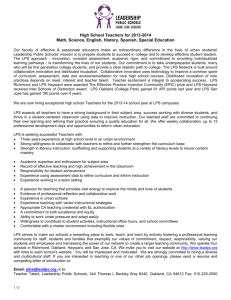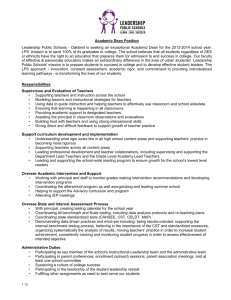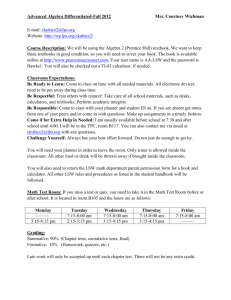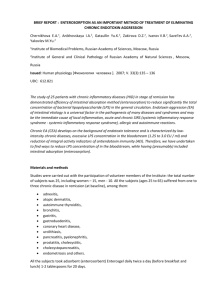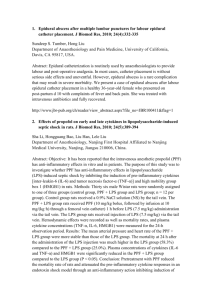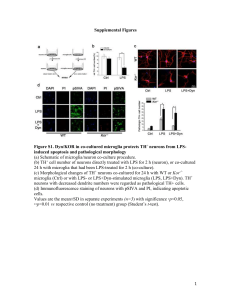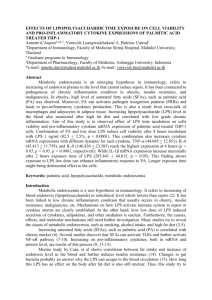Page
advertisement
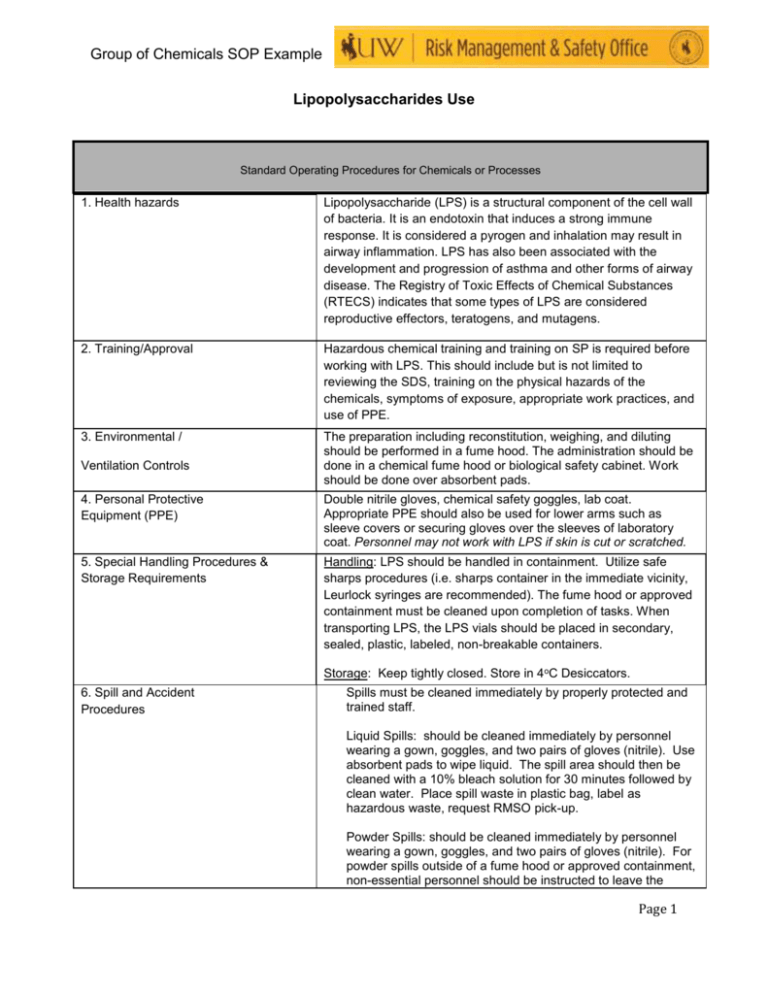
Group of Chemicals SOP Example Lipopolysaccharides Use Standard Operating Procedures for Chemicals or Processes 1. Health hazards Lipopolysaccharide (LPS) is a structural component of the cell wall of bacteria. It is an endotoxin that induces a strong immune response. It is considered a pyrogen and inhalation may result in airway inflammation. LPS has also been associated with the development and progression of asthma and other forms of airway disease. The Registry of Toxic Effects of Chemical Substances (RTECS) indicates that some types of LPS are considered reproductive effectors, teratogens, and mutagens. 2. Training/Approval Hazardous chemical training and training on SP is required before working with LPS. This should include but is not limited to reviewing the SDS, training on the physical hazards of the chemicals, symptoms of exposure, appropriate work practices, and use of PPE. 3. Environmental / The preparation including reconstitution, weighing, and diluting should be performed in a fume hood. The administration should be done in a chemical fume hood or biological safety cabinet. Work should be done over absorbent pads. Ventilation Controls 4. Personal Protective Equipment (PPE) Double nitrile gloves, chemical safety goggles, lab coat. Appropriate PPE should also be used for lower arms such as sleeve covers or securing gloves over the sleeves of laboratory coat. Personnel may not work with LPS if skin is cut or scratched. 5. Special Handling Procedures & Storage Requirements Handling: LPS should be handled in containment. Utilize safe sharps procedures (i.e. sharps container in the immediate vicinity, Leurlock syringes are recommended). The fume hood or approved containment must be cleaned upon completion of tasks. When transporting LPS, the LPS vials should be placed in secondary, sealed, plastic, labeled, non-breakable containers. Storage: Keep tightly closed. Store in 4oC Desiccators. 6. Spill and Accident Procedures Spills must be cleaned immediately by properly protected and trained staff. Liquid Spills: should be cleaned immediately by personnel wearing a gown, goggles, and two pairs of gloves (nitrile). Use absorbent pads to wipe liquid. The spill area should then be cleaned with a 10% bleach solution for 30 minutes followed by clean water. Place spill waste in plastic bag, label as hazardous waste, request RMSO pick-up. Powder Spills: should be cleaned immediately by personnel wearing a gown, goggles, and two pairs of gloves (nitrile). For powder spills outside of a fume hood or approved containment, non-essential personnel should be instructed to leave the Page 1 Individual Chemical SOP Example laboratory and entrance should be restricted. In addition to the above specified PPE, A respirator (requires enrollment in UW’s respirator program) should also be worn. The spill area should then be cleaned thoroughly with a 10% bleach solution for 30 minutes followed by clean water. Place spill waste in a plastic bag, label as hazardous waste, request RMSO pick-up. Accident: In case of skin contact or injection with LPS, wash the affected area with soap and water as soon as possible for at least 15 minutes. For eye exposure, flush with water for at least 15 minutes. Then go to the Ivinson Memorial Hospital Emergency Department. Report incident to supervisor. Supervisor reports the accident/injury on UW OARS. Full strength unused LPS, mixtures containing LPS, and grossly contaminated spill clean-up debris must be collected by EHS. For other waste containing LPS, consult with RMSO-RMMC at 307766-3698 7. Waste Disposal 8. Precautions Use for Animal 9. Decontamination No recapping needles. Have a sharps container in close vicinity. Animals should be restrained or anesthetized during injection. Once LPS is injected, animals are neither hazardous nor infectious. Decontaminate work areas with 10% bleach for 30 minutes. Follow with clean water. 10. Designated Area Name (print) (Assessor): Title: Signature (Assessor): Date: Name (print) (PI, Lab Manager, or Unit Head): Title: Signature (PI, Lab Manager, or Unit Head): Date: Date Sent to RMSO: Page 2


